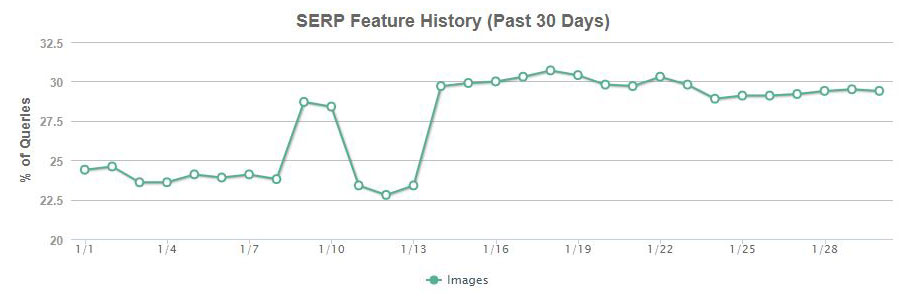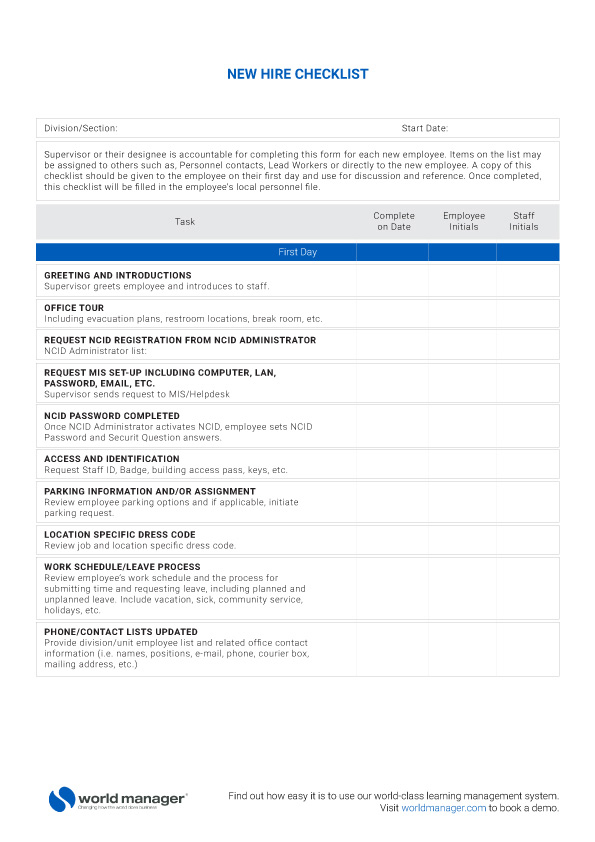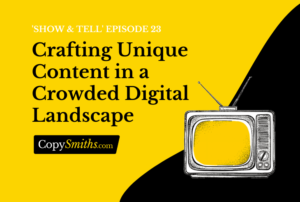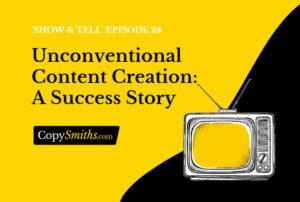Home » Blog » How Visual Blogging is Helping One Global Brand Write its Story

How Visual Blogging is Helping One Global Brand Write its Story
The value of visuals is not breaking news. My inbox and news feeds are littered with posts and articles dissecting the anatomy of visual content and our insatiable appetite for imagery.
But experts (still) agree – visual content has a major impact on reach, engagement, and sales. And in this post, I want to highlight the confluence of branding and blogging as a natural extension of a brand’s journey.
Visuals Alone Are Not a Panacea
Visuals, explains Seth Godin, make data easier to understand and give other bloggers something to embed into their posts (leading to contextual backlinks).
“In short, images convert.”
But there sure is a lot of hyperbole about our ability to process visual information – the logic being that our proclivity for visuals makes them invaluable to marketers.
Like the oft-quoted statistic that we process visuals 60,000 times faster than text.
I’ve quoted that figure myself just last year. Because science! Sixty-thousand times faster is such a seductive superlative.

60,000 times faster? Really?
The thing is, this surprisingly pervasive ‘fact’ is more likely a myth older than most Millennials and was first propagated by 3M Corporation in the early 80s. Even Neil Patel swallowed it whole without verifying the source – just like so many marketers before him (and me).
Content marketers have been so keen to spruik the power of the infographic in recent years that we threw all due diligence out the window and accepted any sexy statistic we could find that married with our hypothesis that humans are what they see.
All Hail the Visual Cortex: A Marketer’s BFF
Still, what is evident is that we process images very quickly – as little as 13 milliseconds – largely thanks to the evolutionary miracle that is the visual cortex.
The primary purpose of this part of our brain is to receive, segment, and integrate visual information.
“This process is highly specialized and allows the brain to recognize objects and patterns quickly without a significant conscious effort.”
Without a significant conscious effort… it’s not even something we can control.
Most marketers wouldn’t be surprised to hear that presentations using visual aids were found to be 43% more persuasive than unaided presentations (caveat: possibly another one of those dodgy 3M stats, but w/e).
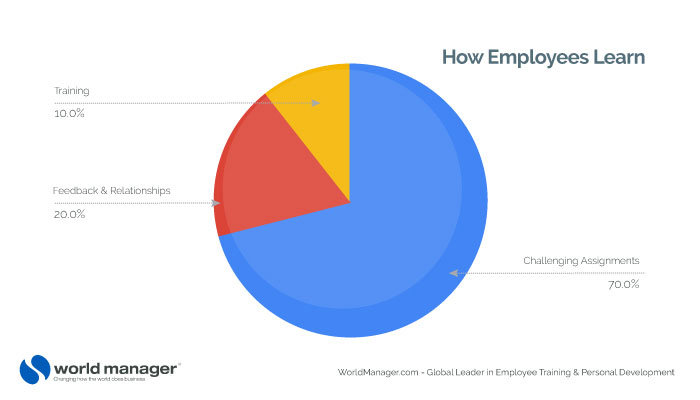
Pie Charts – simple but effective
So like you, I’m a visual creature. My learning style may not be quite as visually-inclined as some people, such as graphic designers, but like all humans (with adequate vision), I seem to respond well to a blend of sensory input, whether visual, auditory or kinesthetic.
And because people like images, Google likes images, too.
Which explains a few things (for me, anyway):
- Why images currently hover around 25% to 30% of all search queries, closely followed by video
- Why video alone is predicted to comprise 82% of all IP traffic by 2022 (with gaming’s appetite for bandwidth the only limiting factor preventing it from rising even higher)
I reckon it also explains:
- How we helped our client’s website grow from 1,000 to 97,000 monthly blog visitors
- How we gained 140,000+ people to one client’s website with zero dollars spent on ads
- And why we’re relying more than ever before on the power of branding to build authority and trust
Google can even read text in images such as photos, or directly via your camera lens, although I had tremendous difficulty pinning down any official word on how Google’s search algorithms use OCR to recognise text in images and select them for SERPs.
Not sure why that is, but probably a rabbit hole for another day.
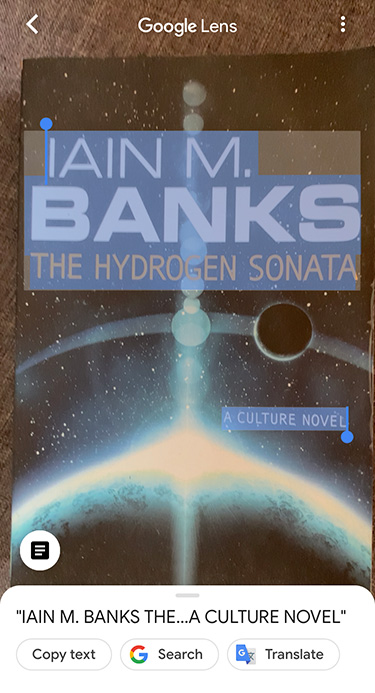
Google Lens can read, too.
So What Does Blogging Have to Do With Branding?
Blogging and branding; it’s the neglected nexus of marketing communication.
We’ve realised that blogging – the staple of many a content marketing strategy – combines extremely effectively with visual content to satisfy user intent (and Google’s algorithms).
Which is why visual blogging – the combination of text and visuals such as colour, icons, graphics, tables, charts, videos, etc. – is so powerful.
Colour alone is a massive part of most brand identities.
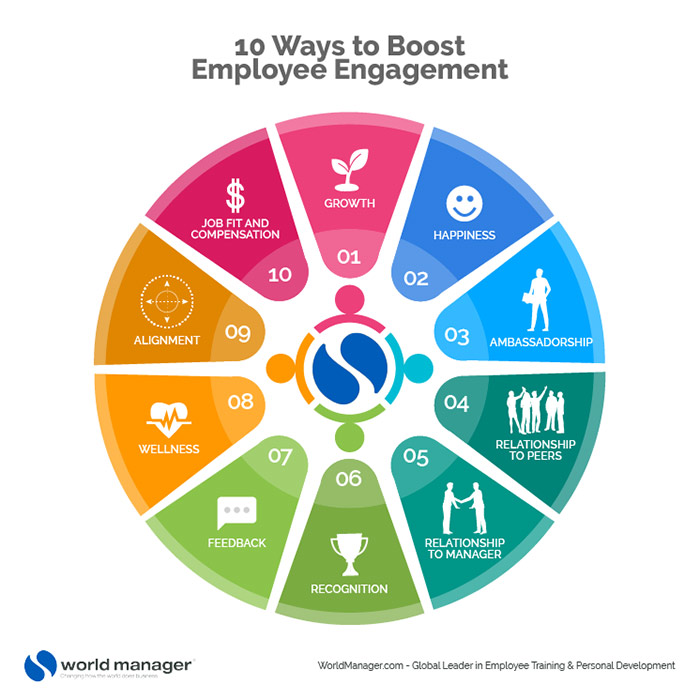
Brand as the centrepiece
Again, I’ve come across a lot of sexy statistics that have been flying around for years about colour’s power to influence human decision-making.
The most pervasive study ‘finding’ linking colour to brand identity is colour increases brand recognition by up to 80 percent.
You’ll see it pop up in countless infographics about colour and marketing. It comes from a University of Loyola, Maryland study but was likely taken out of context and was more about the difference between colour versus monotone printing than brand recognition, per se.
Still, there’s little doubt colour has a profound impact on our ability to recognise brands. My son can spot McDonald’s red and yellow arches from miles away.
I suspect the fusion of branding and blogging is more nuanced than just what we see. The visual components come together with other elements to form a recipe for a brand’s success.
“A clever combination of a logo, colour palettes, tone of voice, imagery and brand story enable businesses to curate a recognisable image of a company that customers are prepared to buy into.”
— Branding Future Unicorns: The Impact of Branding on Investment, White Bear Studio
In other words, mix it up.
Make Your Brand Remarkable
Most of our clients are finding it increasingly challenging to stand out in 2020 due to an increasingly crowded market.
Their biggest competitors might be old-fashioned, but they’re strong and consumers trust them.
How do you ensure your voice is heard in all the noise? How do you get people to connect with your brand? How can you create the brand halo effect?
Well, it’s simple (sort of). Be relevant. Add value.
And be remarkable.
Take Tesla Motors Master Plan:
“Build sports car
Use that money to build an affordable car
Use that money to build an even more affordable car
While doing above, also provide zero emission electric power generation options
Don’t tell anyone.”
That last bit. Don’t tell anyone.
Well, someone did, and that’s the point.
In an age where attention is priceless, you can’t buy it. Engagement – and not interruption – becomes the real asset.
Seth Godin, who coined the term permission marketing, says it best:
“When one Tesla driver passes another on the road, they share an experience and that has to do with them supporting this guy {Elon Musk} before other people do, but mostly it’s about themselves. They look at each other and say ‘thank you for being one of us’.”
People experience your brand – either directly – after buying your product – or indirectly – by engaging with your brand via something that you have shared with them in, say, a video or a blog post.
And one person’s experience of your brand will – almost inevitably – be quite different from another’s.
Even if they don’t move through the customer acquisition journey in a linear, predictable fashion – they might go from awareness to conversion to advocacy – or from awareness to advocacy to conversion – these asynchronous pathways all ultimately contribute in some way.
“Your customers are the ones who ultimately define your brand. Their perception of your brand is what sticks with the people they influence.”
The Customer is the Channel
Consumers can buy anything, anywhere, anytime, so branding – and making it stick – is more important than ever.
Transactional relationships are no longer enough to sustain a business and an emotional – even irrational – connection with the customer is vital for long-term loyalty.
“With so much consumer choice, sometimes people are making decisions based on price or discounts. But a lot of the time, they’re making decisions based on their gut and other emotional factors they might not even realise.”
— Lindsay Nelson, president of TripAdvisor’s CoreX business unit
So how do you foster that emotional connection with your brand? And what – really – is brand?
Seth Godin said brand isn’t logo.
A logo is obviously part of it. But it’s Godin’s assertion that your brand is simply a promise that really speaks to a brand’s intangible power.
A strong brand offers a shortcut to expectation in a way that other cues – whether visual or audible – cannot.
A strong brand provides a consumer that immediate emotional shift which assures you that by choosing the brand you will get the change you desire.
A strong brand effectively becomes the instantly recognisable voice of the business.
“All we can do is make our best choice in the moment, and that choice is based on the promise.”
— Seth Godin
Content marketers know that the decision to buy often only happens “after a series of give-and-take exchanges where the business gives the customer value-added content, the customer shares some of their data, the business provides them with more content, the customer engages and eventually factors the company into their product consideration when they’re ready to buy. Or not.” Here’s What You’ve Been Doing Wrong on Social Media, According to Seth Godin
So how do you ensure your brand remains top-of-mind throughout that buyer journey – from initial engagement through to the point-of-sale?
How do you make your brand strong?
Don’t Stop at a Content Upgrade and Call it a Day
The real trick is scale.
Actually, the real trick is trust, but gaining trust takes time. You need to earn it. By adding value again and again and again.
Which is what I mean by scale. Creating an almost endless cascade of value that will engage your audience and help earn their trust.
It’s not just about amplification or reaching everyone. It’s about reaching the smallest market you can adequately serve. What Godin calls your MVA – or minimum viable audience.
And doing it a lot.
It’s still about numbers, but more in terms of what you offer rather than who you offer it to.
But catering to the appetite of even the smallest market can seem daunting to all but the biggest marketing budgets. You can only generate so much multi-channel inbound content. Videos, newsletters, webinars, ad infinitum. They’re resource-hungry and expensive to produce.
So we go back to basics. And brand everything.
Wherever we can use a visual – such as a chart, table, or a cheatsheet – to enhance the text-based content in a blog post or pillar page, we do.
The fact it’s also branded is no accident and may even seem a bit forced to some. But not if it’s done unobtrusively.
The brain responds to the repetition and develops a positive association between the brand, perceived value and personal benefit.
Move Online to Offline With Branded Visual Assets
We use branding as a Leap Tactic. An opportunity to exploit Google’s (and our own brain’s) penchant for imagery – especially high-quality, shareable, relevant images that satisfy user intent and add value.
For example, we helped World Manager, a well-established global SaaS business, to share its brand story by building a library of high-quality topical articles and visual assets.
Nothing too ground-breaking – just a lot of great articles with useful, relevant information on topics World Manager customers are looking for, supported by plenty of shareable visual assets.
Eye-catching stuff that can be downloaded, printed, embedded in a social post, and so on. This visual content increases dwell time and targets SERP features using tables, FAQs, custom icons, polls, quizzes, informative graphics, SlideShare, etc.
Like this graphic that adds colour and visual appeal to a popular acronym for goal-setting:
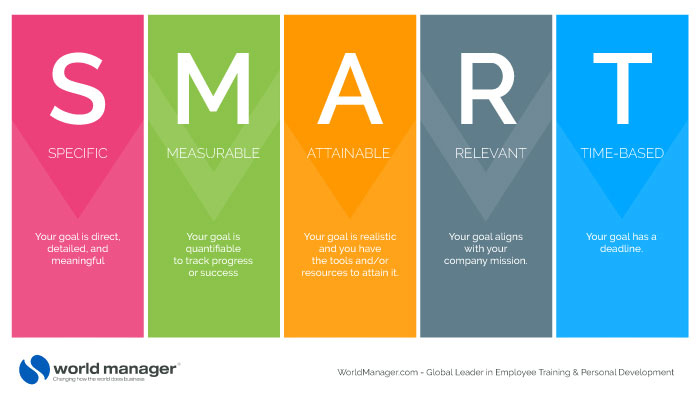
And this printable targeting workplace smokers:
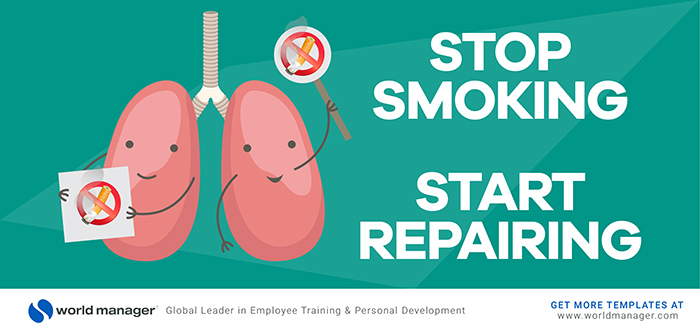
We create hundreds, sometimes thousands, of these visual assets (in multiple formats including PDF, JPG, GIF, AI, PSD, PNG, and EPS) which Google promptly indexes and deems highly-relevant content for those search topics and queries (Google can read text in images, remember).
Each and every piece of content, whether a blog post, printable, infographic, etc., is linked together in a topic cluster – and typically curated into a Pillar Page.
The combination of the primary Pillar Page and related cluster content creates a tightly-interlinked topical architecture and develops broader search engine authority for our clients’ websites.
The Pillar Page acts as a lodestone for the entire topic cluster, attracting quality organic search traffic from the related blog posts.
Dozens of high-quality long-form blog posts based on relevant high-traffic keywords create specific topic clusters.
Each post is at least 1,000 words, 100% unique content, professionally sub-edited, plagiarism-checked, analysed for keyword-compliance and includes an engaging feature image.
Like this:

Feature images typically remain unbranded but are bespoke, on theme (especially in terms of colour palette), and relevant to the topic at hand – in this case a post on engaging a multi-generational workforce through learning.
Before World Manager engaged us in late 2019, they had a strong business model and an experienced sales team, but a weak online profile and negligible domain authority.
We immediately set about reducing World Manager’s reliance on outbound marketing by developing a more sustainable inbound marketing strategy.
Integrating branded content into your content marketing activities – like your blog, for example – is a logical way for a maturing SaaS business to evolve its marketing model.
Our Goal: Make the World Manager brand scalable by creating unique, shareable content that can be repurposed across a variety of channels.
Branded Content Creates Connection and Clarity
For me, the intersection of branding and content is about clarity. Clarity of voice, clarity of vision and clarity of report purpose – so the audience recognises the brand identity and knows why they exist and what they stand for.
It’s about establishing and building a clear, long-lasting connection between customers’ needs and a strong brand story.
It’s an opportunity to expand the brand’s reach using visual assets – borrowing strategy from affiliate digital content sellers – and achieving the crossover from online to offline.
Even if it’s just a simple door hanger used by an HR manager to convince a company’s workers to quit smoking.
Every time someone grabs that door handle, they’ll associate the brand (even if it’s just subconsciously) with something – or someone – they trust.
CopySmiths
I'm Katrina McKinnon, founder of CopySmiths and Small Revolution. In my 20 years of experience, I have helped online businesses create high-performing content specifically on an eCommerce store's blog. Find me on LinkedIn and Twitter.

CopySmiths offers the best blog writing services for online stores.
If you'd like us to write blog articles for you, click here.
Most Recent
- 3 Bold Questions You Should Ask When Hiring A Content Writer

- 5 Practical Reasons You Should Use a Blog Post Template

- 4 Amazing Benefits of Using a Title Generator for New eCommerce Blogs

- 10 Awesome Bio Examples Your Online Store Blog Should Emulate

- 8 Basic Steps to Successful Content Development Every Time

Podcasts
Got a question?
Ask our friendly team about our article writing services.
Subscribe to CopyZine
Monthly, hand-picked stories of the best in eCommerce Content.

